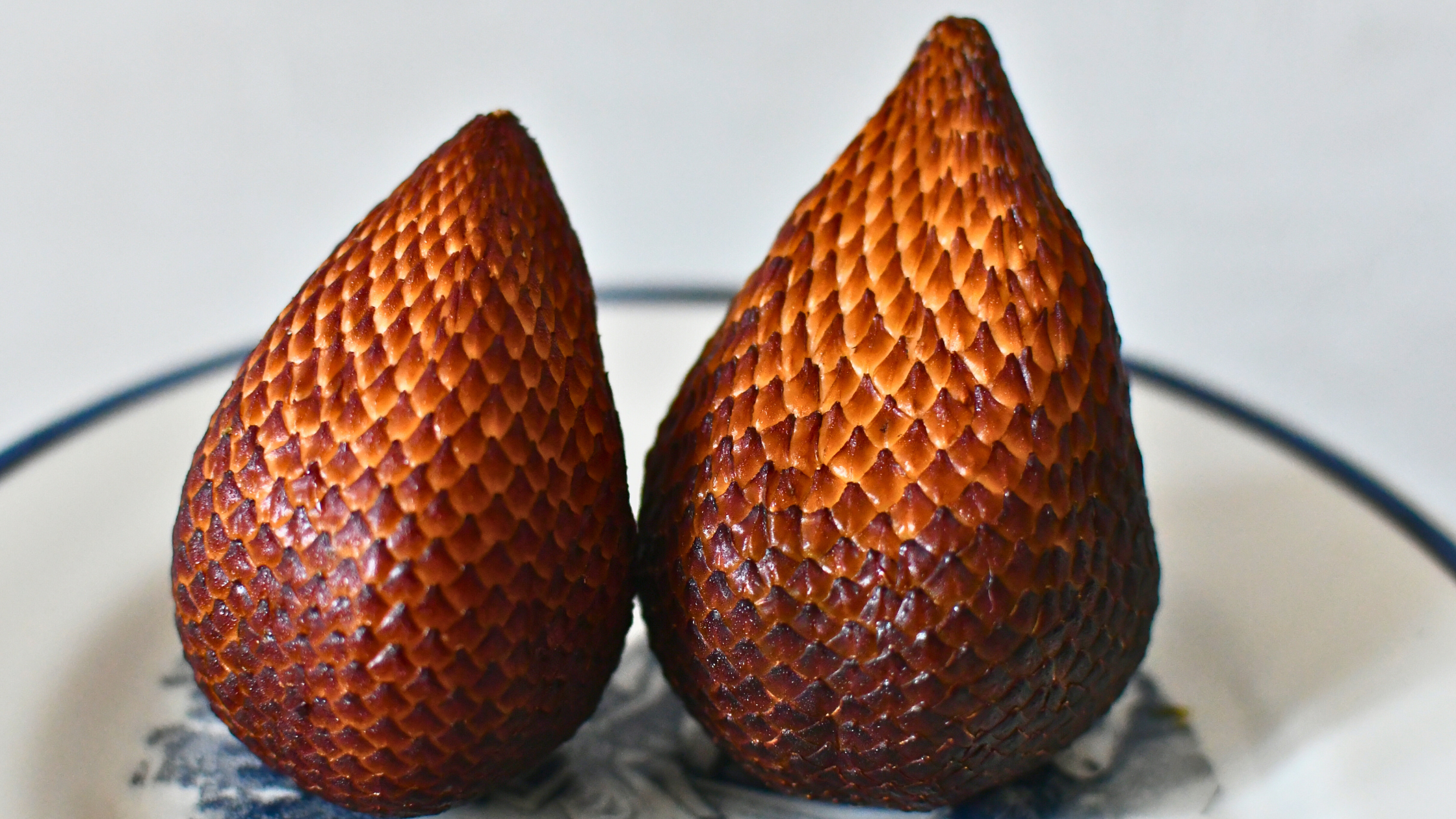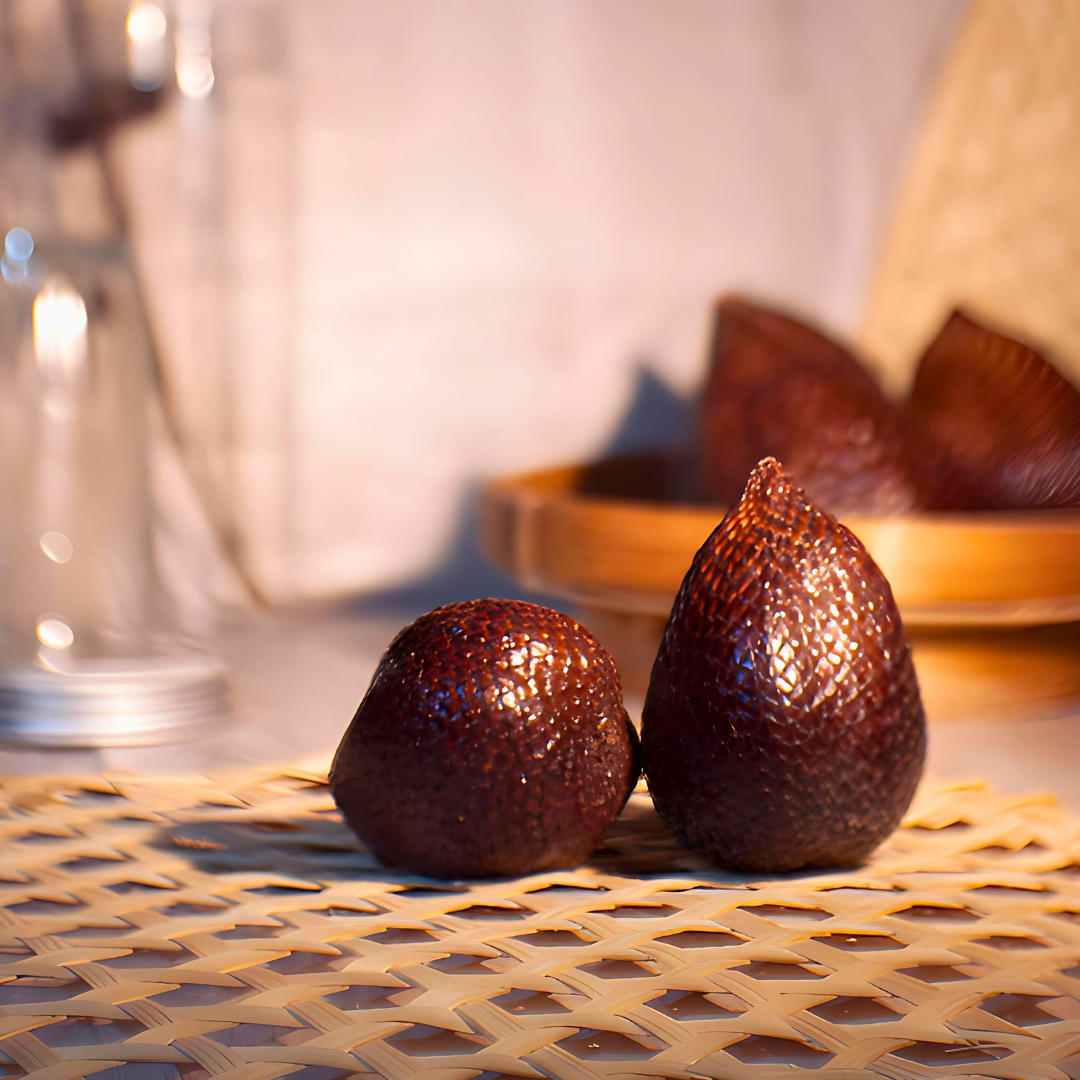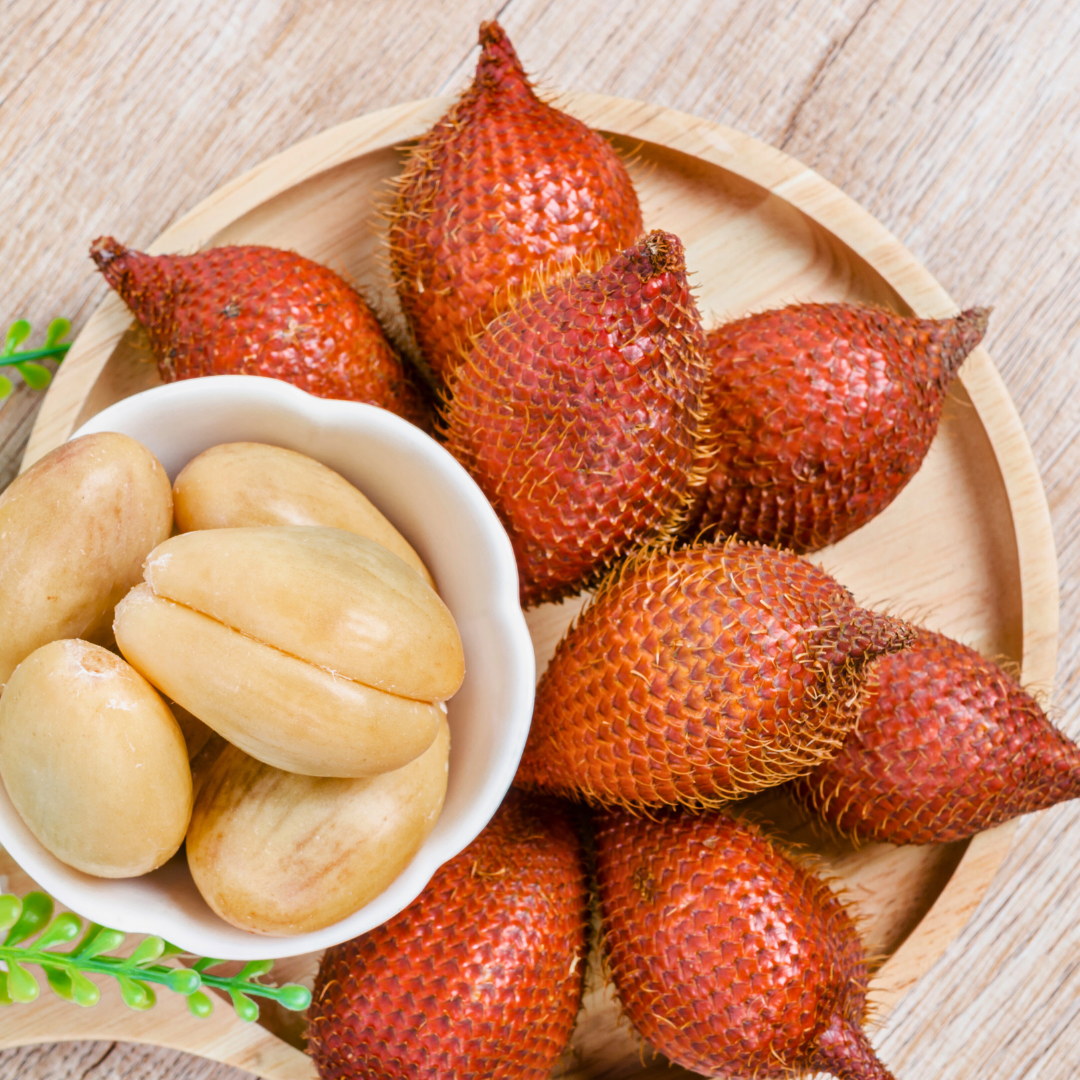Don't Be Ssssscared: Unveiling the Spiky Secrets of Snake Fruit (Salak)
null • May 16, 2024 3:36:56 AM • Written by: Neil C.

Forget the beaches (for a minute). Forget the temples (okay, maybe just for a second). Indonesia and Bali have a secret weapon in their culinary arsenal, and it's not durian this time. We're talking about snake fruit, also known as salak.

This isn't your average, run-of-the-mill fruit. Snake fruit looks like it belongs in a Jurassic Park prop closet, with its reddish-brown, scale-covered exterior. But don't let its reptilian appearance fool you – inside lies a sweet and tart surprise waiting to be discovered.

A Flavor Explosion (Without the Smell)
Unlike its pungent cousin durian, snake fruit offers a delightful dance of flavors on your tongue. Think sweet and tangy tangoing with a hint of astringency, all backed by a refreshing, crisp texture. It's like a tropical fruit fiesta in your mouth, minus the overpowering aroma.
Conquering the Snake (Fruit): A Beginner's Guide
Don't let the spiky exterior intimidate you! Here's how to crack this scaly code and unlock the deliciousness within:
- Find the Soft Spot: Look for the stem end of the fruit. That's your gateway to the good stuff – it's the weakest point in the armor.
- Pinch & Twist: Channel your inner Hercules and gently pinch the stem end with your thumb and forefinger. Give it a little twist, and the tough skin should crack open, revealing the sweet flesh beneath.
- Peel Away the Scales: Once cracked, the scaly skin should peel away relatively easily, just like peeling back the years (except way easier and tastier).
- Seed Situation: Each segment of flesh harbors a single, inedible seed. Discard it before enjoying the juicy goodness.
Snake Fruit: More Than Just a Snack
While snake fruit is a champion snack on its own, its culinary talents extend far beyond the realm of handheld treats. In Indonesia and Bali, snake fruit finds its way into all sorts of dishes, adding a unique sweet-tart punch to salads, salsas, and even jams.

Ready to Snake Your Way to Flavortown?
If you're venturing to Indonesia or Bali, keep your eyes peeled for snake fruit at local markets. These scaly delights are typically in season from late rainy season to early dry season (roughly November to April). Don't be afraid to ask a friendly vendor for tips on picking the ripest fruit, and embrace the adventure of unlocking its delicious secrets!

Bonus Tip:
Some snake fruit varieties have a slightly fuzzy exterior. If you have sensitive skin, consider wearing gloves when handling it.
So, the next time you're in Indonesia or Bali, skip the durian drama for a minute and delve into the world of snake fruit.
You might just discover your new favorite tropical adventure (and it won't stink up your suitcase!).
.png?width=150&height=84&name=PP%20Logo%20transparent%20landscape%20dark%20(950%20px).png)
